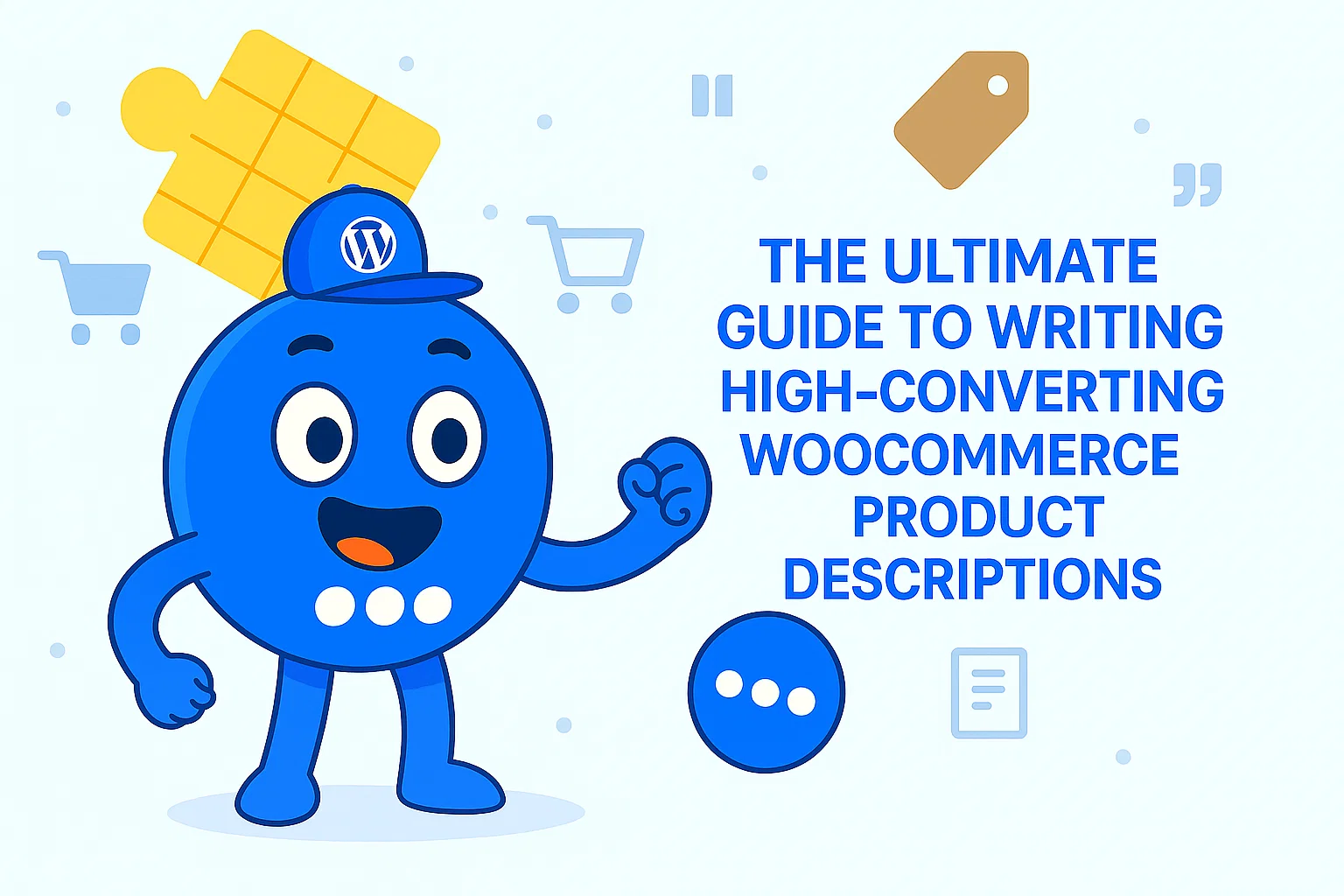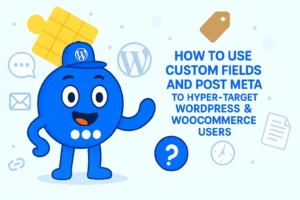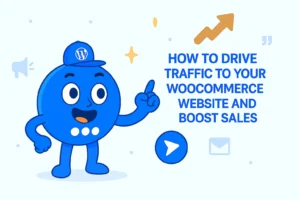The Ultimate Guide to Writing High-Converting WooCommerce Product Descriptions
Optimizing WooCommerce product descriptions is a critical endeavor for any online store aiming to maximize sales, build customer trust, and improve search engine visibility. This article synthesizes best practices across content strategy, search engine optimization (SEO), and conversion rate optimization (CRO), highlighting how well-crafted descriptions move beyond mere information to become powerful sales tools. Key recommendations include a fundamental shift from feature-centric to benefit-driven narratives, strategic keyword integration, leveraging high-quality visuals, and employing persuasive techniques such as storytelling, urgency, and social proof.
Furthermore, this article will explores how various WooCommerce plugins, including the “Floating Awesome Button,” can significantly enhance product page functionality and user experience, ultimately driving higher conversion rates. By avoiding common pitfalls and adopting a customer-centric approach, businesses can transform their product pages into high-performing assets that resonate deeply with their audience and achieve sustainable growth.
The Strategic Importance of WooCommerce Product Descriptions
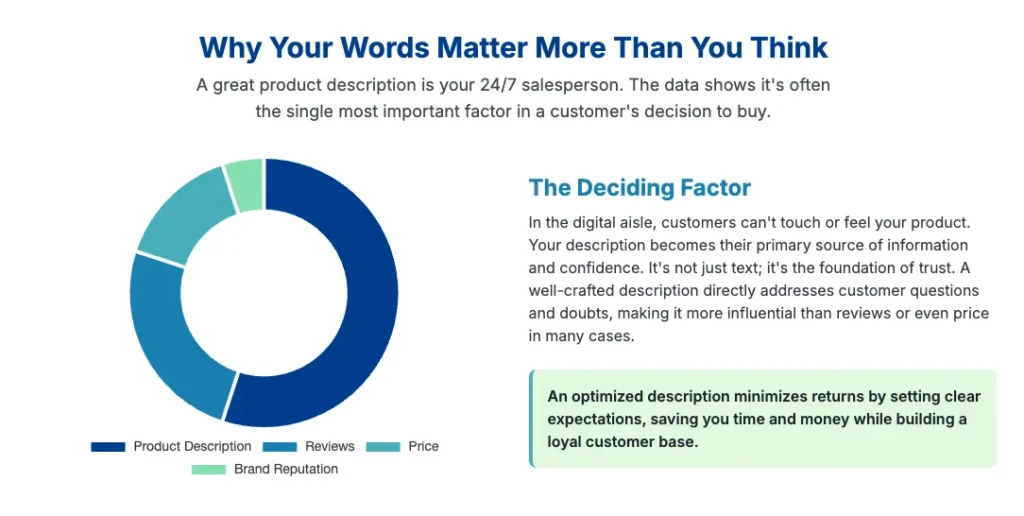
Product descriptions in an e-commerce context are far more than simple textual listings of product specifications; they are pivotal drivers of online retail success. Their strategic importance extends across multiple facets of the customer journey, from initial discovery to final purchase and subsequent retention.
Beyond Basic Information: How Descriptions Influence Sales, Build Trust, and Improve Retention
Product descriptions are a paramount component for optimizing any WooCommerce product page to increase sales. Detailed and accurate descriptions are foundational for establishing trust and credibility with potential customers. This transparency minimizes misunderstandings about the product, which in turn leads to a significant reduction in returns and exchanges, fostering a more reliable and satisfying customer experience.
In the broader context of WooCommerce stores, these descriptions provide essential information to prospective buyers, directly improving SEO performance and playing a decisive role in converting website visitors into loyal customers.
A primary factor influencing a consumer’s purchase decision, even outweighing the impact of reviews and price, is the comprehensiveness and quality of the product description. When descriptions effectively communicate customer benefits, demonstrating how products solve specific problems or enhance daily life, they can notably increase conversion rates by up to 30% and cultivate stronger brand loyalty.
The deep connection between conversion rate optimization (CRO), trust, and content quality is evident: if product descriptions are the leading factor in purchase decisions, then investing in their excellence directly impacts the most sensitive part of the conversion funnel. A robust, well-crafted product description serves as the bedrock of persuasion and trust. If this foundational layer is weak or unconvincing, even compelling reviews or competitive pricing may not overcome initial customer hesitation.
This suggests a strategic imperative to prioritize expert copywriting and a profound understanding of the customer’s needs before focusing solely on external trust signals or engaging in price wars. The positive effects of this approach extend beyond immediate sales, contributing to a more sustainable business model built on genuine value communication and customer satisfaction, which ultimately leads to higher customer retention.
Furthermore, the integration of storytelling within descriptions creates a powerful emotional connection with customers, effectively differentiating a brand in a crowded marketplace and significantly increasing conversions. As a guiding principle, it is often observed that “products do not sell themselves; stories do“.
Shifting Focus from Product Features to Customer Benefits and Value Proposition
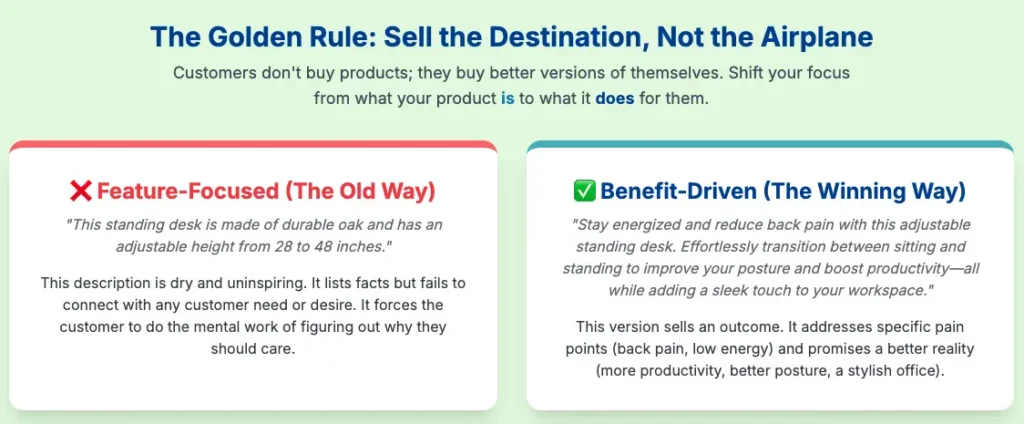
A fundamental shift in perspective is required when crafting effective product descriptions: moving the emphasis from merely listing product features to articulating the tangible benefits and the overarching value proposition for the customer. Effective product names and descriptions should not only detail what a product is but also explain its potential advantages to customers, simplifying their decision-making process and encouraging purchases.
The focus must be on the specific advantages and Unique Selling Points (USPs) of the product, transcending generic, feature-oriented descriptions. Rather than simply enumerating specifications and pricing, compelling product descriptions should center on the value the product delivers to the customer, directly answering the question: “How will this product meaningfully impact their life or work?“. Benefits illustrate how a product enhances a customer’s life, tapping into emotional triggers by showing how it resolves a problem, saves time, or improves daily experiences.
A substantial majority of consumers, approximately 70%, prefer brands that communicate benefits over features, underscoring the critical importance of this strategic shift. The ultimate objective is to “sell the outcome” rather than just the specifications, clearly demonstrating how the product integrates into the customer’s daily routine and alleviates their pain points.
This consistent emphasis on moving from features to benefits is not merely a stylistic preference but a deep dive into consumer psychology. Benefits explain how a product improves a customer’s life and taps into their emotional triggers. This highlights that purchasing decisions are often driven by desired outcomes and feelings—such as relief from discomfort, increased productivity, or a sense of luxury—rather than just technical specifications.
This means that product description writing is fundamentally an exercise in marketing and empathy, requiring writers to deeply understand the customer’s world, their aspirations, and their challenges. The task then becomes articulating how the product can transform that reality for them. This broader implication suggests that product development and marketing teams must collaborate to define not just product capabilities, but the human impact of those capabilities.
The following table illustrates this crucial distinction with practical examples:
| Feature-Oriented Description (Less Effective) | Benefits & USP-Focused Description (More Effective) | Core Principle/Impact |
| “Our organic face cream is made with all-natural ingredients and antioxidants to fight aging and promote healthier skin.” | “Rejuvenate your skin with our luxurious Organic Anti-Aging Face Cream. Say goodbye to fine lines and wrinkles as our unique formula deeply hydrates and restores your skin’s youthful radiance.” | Taps into emotional triggers, focuses on customer outcome, and addresses desires for transformation. |
| “This standing desk is made of durable oak and has an adjustable height ranging from 28 to 48 inches.” | “Stay energized and reduce back pain with this adjustable standing desk. Designed for effortless transitions between sitting and standing, it helps improve posture and boost productivity — all while adding a sleek touch to your workspace.” | Solves specific pain points (back pain) and highlights positive outcomes (energy, productivity, aesthetics). |
| “This candle is made with soy wax and features hints of vanilla and cedarwood.” | “As the flame flickers, notes of warm vanilla and smoky cedarwood fill the air — like the comfort of a crisp autumn evening.” | Evokes sensory experience and emotional connection, selling a feeling rather than just ingredients. |
Fundamental Components of an Optimized WooCommerce Product Page

Crafting Compelling Product Titles for Clarity and SEO
Product titles serve as the initial point of engagement for both customers and search engine algorithms. They must be clear, descriptive, and concise, effectively communicating the page’s purpose. For optimal search engine optimization (SEO), titles should be unique, highly descriptive, and strategically incorporate relevant keywords. It is generally advisable to place the primary keyword near the beginning of the title, ideally within the first 3-5 words, to maximize visibility.
To prevent truncation in search results, titles should be kept short, typically between 50-65 characters, while still highlighting key attributes such as size, color, or material. A well-structured title often follows a format like “Brand Name + Flavor + Keywords + Product Type + Packaging + Size/Count,” prioritizing clarity over cleverness and strictly avoiding keyword stuffing or the use of special characters that can hinder search performance.
The Role of Short vs. Long Descriptions: Purpose, Content, and Placement
Effective product pages strategically utilize both short and long descriptions to cater to different customer needs and engagement levels. A concise product description, often referred to as the short description, is designed to convey the essence of the product swiftly. This brief summary should emphasize the product’s main idea, crucial details, core value, key advantages, and essential features, presented in a few persuasive, jargon-free lines. It typically appears prominently next to the product title and image on shop or category pages, offering a quick overview before a customer delves deeper.
In contrast, the long description provides detailed and comprehensive information. This section is the place to elaborate on material information, size specifications, technical features, benefits, and unique selling points. For enhanced readability, it is advisable to structure the long description into different sections, potentially using headings. Crucial information should be highlighted early, as many customers may not read the entire text. For optimal results, a combination of an engaging paragraph (prose) to establish an emotional connection and bullet points for quick, scannable details (like dimensions or materials) is highly effective. Long descriptions typically range from 150-400 words and can utilize headers (H2-H4) to organize content and integrate related keywords. To prevent page overcrowding, detailed product information can also be presented within tabs, drop-down menus, or expandable sections.
Leveraging High-Quality Images and Videos for Visual Persuasion
Visual elements are often more persuasive than text and are a crucial part of any product page. High-quality images not only enhance the aesthetic appeal of a WooCommerce product page but also provide customers with a detailed view of the item, which can significantly influence a successful purchase. It is recommended to use at least 3-4 professional, high-resolution, original, and distinctive images with simple visuals, showcasing multiple angles of the product.
Adding videos to product pages is another powerful strategy, as they can showcase features and usage more effectively, building trust and encouraging purchases. Videos are particularly impactful for products that are often used in motion or for innovative items that benefit from a visual demonstration. Advanced visual options include zoom functionality, 360-degree images , and crucially, images of people actively using or wearing the product to provide context and demonstrate real-world value. Images should also be optimized for web performance (e.g., using formats like WebP or JPEG, keeping file sizes under 200 KB) and include descriptive alt text for SEO purposes.
These visual elements directly impact the customer’s ability to “feel” and “experience” the product online, reducing perceived risk and uncertainty, and thereby increasing the likelihood of conversion.
Utilizing Product Attributes, Categories, and Tags for Organization and Discoverability
Effective organization of product data is vital for both user experience and search engine visibility. In WooCommerce, product data encompasses attributes, such as size, color, and material, which differentiate products within the same category. Additionally, taxonomies like categories and tags are used to organize and group products. Categories are hierarchical, allowing for parent-child relationships, and serve to group products with similar features. Tags, conversely, are non-hierarchical keywords that help customers discover similar or related products.
Both categories and tags should be assigned clear names and slugs (URL-friendly versions of names) to facilitate search engine crawling and indexing. Global attributes can be defined for consistency across an entire store, while custom attributes can be added for unique, one-off product characteristics. These organizational elements significantly enhance user navigation, enabling advanced filtering options based on attributes , and contribute to overall SEO by providing structured information to search engines.
The meticulous planning of product taxonomy, considering both intuitive user logic and keyword relevance, is a foundational SEO and user experience strategy. It directly impacts both internal site performance and external discoverability, leading to improved on-site navigation and filtering, enhanced search engine crawlability, increased user engagement, and ultimately, higher organic traffic and conversion rates.
The following checklist summarizes the fundamental components of an optimized WooCommerce product page:
| Product Page Element | Key Best Practices |
| Product Title | 50-65 characters, primary keyword first, unique and descriptive |
| Short Description | Concise summary, highlight key features, persuasive language, jargon-free |
| Long Description | Detailed, structured (sections/headings), highlight crucial info early, 150-400 words |
| Product Images | 3-4 high-resolution, professional, original images; multiple angles, usage shots, zoom, 360-degree views, descriptive alt text |
| Product Videos | Showcase features and usage effectively, interactive where possible |
| Product Attributes | Differentiate products (size, color, material); enable filtering; define globally or custom |
| Categories & Tags | Organize products hierarchically (categories) or by keywords (tags); clear names and slugs for SEO and navigation |
Crafting Conversion-Driven Copy: From Features to Emotional Connection

The essence of high-converting product descriptions lies in their ability to transcend mere factual reporting, engaging customers on an emotional level and compelling them to take action. This requires a nuanced understanding of the audience and the strategic deployment of persuasive language.
Understanding Your Target Audience and Addressing Their Pain Points
The bedrock of compelling product descriptions is a deep understanding of the target audience. This involves knowing their demographics, lifestyle, interests, needs, and, critically, the specific problems or “pain points” they are seeking to resolve. Descriptions should be meticulously tailored to resonate with this target customer, making it immediately clear why the product is the perfect solution for them and directly addressing their challenges.
Effective copy frames product benefits around desired outcomes, employing inclusive language like “you” and “imagine,” and presenting “before/after” scenarios that allow the customer to envision themselves as the hero of the story. Considering when and where someone would typically use the product—whether for daily routines, special occasions, or travel—helps paint a relatable picture and deepen the connection with the reader.
To make benefits tangible, it is effective to quantify outcomes with metrics (e.g., “80% improvement in four weeks“) and vividly illustrate scenarios of use. Furthermore, showcasing time savings and highlighting future-oriented benefits can assure buyers of their investment’s long-term value and convenience.
Incorporating Persuasive Storytelling and Sensory Language
Prose can bring a product to life, setting a scene and connecting with the shopper on an emotional level. Storytelling is a powerful technique that creates emotional connections, differentiates a brand, and increases conversions by sharing relatable narratives about how products fit into real-life scenarios. Integrating “micro-stories” directly onto product pages—such as a brief account of how an idea for the product came to life, a compelling line from a customer review, or a note about where and why it is made—can humanize products and foster trust.
Sensory language plays a crucial role in vividly illustrating benefits and captivating potential buyers. By using descriptive words related to sight, sound, taste, touch, and smell, descriptions can evoke a richer, more immersive experience. Products described with sensory language have been shown to see a significant increase in conversions, potentially up to 70%.
Advanced Persuasive Techniques: Urgency, Scarcity, and Authority
Beyond foundational persuasive writing, advanced techniques can further motivate immediate action and build profound trust.
- Scarcity Marketing: This strategy capitalizes on the Fear Of Missing Out (FOMO) and the inherent human desire for uniqueness. It emphasizes limited availability, whether through low stock counts (e.g., “Only 2 Pieces in Stock” ), limited quantities , or exclusive access (e.g., “Invite-Only Sign-Ups” ).
- Urgency Marketing: This technique aims to drive immediate response by creating a time-sensitive incentive. Examples include limited-time offers (e.g., “Today only,” “Expires in X hours/days” ), the use of countdown timers , or “Beat the Clock” sales.
- Social Proof & Authority: These elements are critical for adding credibility and trust, convincing potential customers of a product’s value. This includes incorporating customer reviews and testimonials (with 85% of consumers trusting online reviews as much as personal recommendations), social media mentions, trust badges, and case studies. Highlighting awards or endorsements (e.g., “Editor’s Choice” ) can significantly boost customer confidence. Showcasing popularity through phrases like “Bestseller” or “Over 10,000 happy customers” and utilizing User-Generated Content (UGC) further validates the product’s appeal. Social proof has been shown to improve conversions by 34%.
The following table provides a structured overview and concrete examples of these powerful psychological triggers:
| Technique | Description | Examples |
| Scarcity | Creates FOMO by limiting perceived or actual availability, leveraging the desire for uniqueness. | “Only 3 left in stock!” , “Limited Edition!”, “Invite-Only Access” |
| Urgency | Motivates immediate action by imposing time limits on offers or availability. | “Expires in 24 hours!” , “Today only!”, “Flash Sale!” |
| Social Proof | Builds trust and credibility through validation from peers, experts, or the wider community. | “Bestseller!” , “10,000+ Happy Customers!”, Customer Testimonials , Awards/Endorsements |
Driving Conversions: CRO Strategies for WooCommerce Product Pages

Beyond attracting visitors through SEO, the ultimate goal of a WooCommerce product page is to convert those visitors into paying customers. This requires a focused application of Conversion Rate Optimization (CRO) strategies, such as designing clear calls-to-action.
Designing Clear and Compelling Calls-to-Action (CTAs)
Calls-to-Action (CTAs) are the direct prompts that guide customers toward the desired action, such as “Add to Cart” or “Buy Now.” These buttons must be obvious, simple for customers to locate and interact with, and placed prominently on the page, ideally within the initial visible frame. CTAs should be clear and concise, utilizing strong action verbs to motivate immediate response.
The effectiveness of a CTA is directly influenced by the quality and completeness of the product description that precedes it; a well-informed customer, whose concerns have been addressed, is significantly more inclined to click. Therefore, a CTA is not merely a button but the logical culmination of a well-crafted narrative, its success heavily dependent on the quality and persuasiveness of the content leading up to it.
Enhancing CTAs, Navigation, and User Experience

The Floating Awesome Button plugin can significantly enhance WooCommerce product pages by providing an always-visible, persistent Call-to-Action (CTA) button, regardless of how far down the page a user scrolls.
This plugin directly addresses the best practice of having a “clear call-to-action button” that is “prominently placed” and visible within the “first frame” of the product page. By remaining on screen as the user navigates, it ensures the CTA is continuously accessible, reducing friction and increasing the likelihood of conversion, especially on long product pages where the standard “Add to Cart” button might scroll out of view. It can be configured with “strong action verbs” and persuasive language, aligning with effective CTA strategies.
Beyond its role in enhancing CTAs, the Floating Awesome Button can function as a dynamic navigation hub, offering quick access to critical sections or information. For example, a floating button could link directly to “Customer Reviews,” “Product Specifications,” “FAQ,” “Shipping Information,” or a “Contact Us” form. This improves “easy navigation” and provides “immediate help” , thereby enhancing the overall user experience by simplifying access to key information.
Its persistent nature also makes it highly “mobile-friendly” , providing a touch-friendly, always-available action point on smaller screens, which is crucial given the prevalence of mobile shopping. The plugin can also be used to trigger dynamic recommendations or special offers , further personalizing the shopping experience. By reducing the effort required to find key actions or information, the
Floating Awesome Button contributes to a smoother, more efficient user journey, directly impacting conversion rates. This means the plugin can significantly reduce friction points on complex product pages, directly influencing conversion rates by keeping critical actions and information within immediate and persistent reach, which is especially important for the dominant mobile user base.
Common Pitfalls in WooCommerce Product Descriptions and How to Avoid Them

Even with a strong understanding of best practices, certain common mistakes can undermine the effectiveness of WooCommerce product descriptions, sabotaging conversion efforts and eroding customer trust. Recognizing and actively avoiding these pitfalls is crucial for success. Several recurring issues can hinder product description performance:
- Overly Technical Language: A frequent error is using jargon or industry-specific terminology that potential buyers may not understand. This creates a barrier to comprehension and can alienate customers. The solution is to prioritize clarity and simplicity, using plain, straightforward language that customers can easily grasp.
- Lack of Product Details: Failing to provide comprehensive information about the product, such as precise dimensions, materials, features, and benefits, creates uncertainty and hesitation for potential buyers. To counteract this, it is essential to provide specific and detailed information to inspire trust and confidence.
- Poor Grammar and Spelling: These seemingly minor errors can significantly sabotage product descriptions, eroding professionalism and trust. The solution is meticulous proofreading and editing to ensure descriptions are free of grammatical errors and typos.
- Using Manufacturer’s Generic Descriptions: Relying on generic descriptions provided by manufacturers instead of crafting unique and engaging content is a common oversight. This fails to differentiate a product in a competitive market and misses an opportunity to connect with the customer. The solution is to write unique, compelling narratives that appeal to the buyer’s needs and desires.
- Lack of Relevant Keywords for SEO: Not incorporating appropriate keywords hinders search engine visibility, making it difficult for potential customers to find the product. The solution is to incorporate SEO strategically and naturally throughout the content, avoiding keyword stuffing, and considering long-tail keywords for more specific searches.
- Failing to Highlight Unique Value and Benefits: Neglecting to emphasize what makes the product stand out and how it specifically benefits the customer is a critical mistake. The solution is to highlight unique selling points and explain how features translate into concrete advantages for the customer.
- Neglecting Customer Reviews or Social Proof: Not including elements that build trust with prospective customers, such as reviews or testimonials, is a common oversight. The solution is to actively incorporate social proof to build credibility.
- Vague or Misleading Descriptions: Descriptions that are vague or misleading can lead to mismatched expectations and disappointed customers, potentially resulting in higher return rates. The solution is to be persuasive and authentic, using strong, evocative language to tell a story, but always remaining honest and genuine.
Conclusions and Recommendations
The comprehensive analysis of WooCommerce product description best practices reveals that these descriptions are far more than mere informational texts; they are strategic assets critical for e-commerce success. Their profound influence on sales, customer trust, and retention underscores the necessity of a deliberate, customer-centric approach to their creation.
Key Conclusions:
- Benefits Over Features is Paramount: The shift from listing product features to articulating customer benefits is not a stylistic choice but a fundamental psychological imperative. Consumers are driven by desired outcomes and emotional connections, making benefit-driven narratives the primary factor in purchase decisions.
- Multifaceted Optimization for Visibility and Conversion: Effective product pages require a holistic approach, integrating compelling copy with high-quality visuals, robust SEO practices (including strategic keywords, meta data, and schema markup), and a seamless user experience. Each element plays a symbiotic role in attracting, engaging, and converting visitors.
- Trust is the Ultimate Multiplier: Building customer trust through authentic social proof, transparent information, and accessible support validates product claims and significantly reduces perceived risk, directly boosting conversion rates and fostering long-term customer relationships.
- Authenticity and Clarity are Non-Negotiable: Avoiding generic content, grammatical errors, and misleading claims is crucial. Unique, detailed, and clear descriptions are essential for differentiation, building trust, and preventing customer dissatisfaction and returns.
Actionable Recommendations:
- Reframe All Product Descriptions to Focus on Customer Benefits: Conduct an audit of existing descriptions. For each product, identify the core problem it solves or the specific improvement it offers to the customer’s life. Rewrite descriptions to emphasize these benefits using persuasive, sensory language and storytelling techniques.
- Implement a Tiered Information Structure: Utilize short descriptions for quick summaries on category pages and long descriptions for comprehensive details on product pages. Employ formatting elements like bullet points, headings, tabs, or expandable sections to ensure scannability and information accessibility for all user types.
- Invest in High-Quality Visuals and Interactive Media: Prioritize professional photography that showcases products from multiple angles and in real-world usage scenarios. Integrate product videos and consider 360-degree images to provide an immersive experience, directly addressing the lack of physical interaction in online shopping.
- Adopt Comprehensive SEO Practices: Conduct thorough keyword research and integrate relevant keywords naturally into product titles, descriptions, image alt text, and URLs. Meticulously craft meta titles and descriptions to enhance click-through rates and implement schema markup for rich snippets to improve search visibility and intent matching.
- Optimize Calls-to-Action and Build Trust Proactively: Ensure CTAs are clear, concise, prominently placed, and use strong action verbs. Actively solicit and display customer reviews and testimonials. Integrate trust seals and provide easily accessible customer support options (e.g., chat functionality) to build confidence.
- Leverage Strategic WooCommerce Plugins: Explore and implement plugins that enhance specific aspects of product pages. For example, consider page builders for custom layouts, product add-on plugins for personalization, and visual variation swatches for improved user experience. Crucially, integrate the Floating Awesome Button plugin to ensure critical calls-to-action and navigation links remain persistently visible, particularly on long product pages and mobile devices, thereby reducing friction and directly boosting conversion rates.
By systematically applying these best practices and leveraging the power of WooCommerce’s extensible ecosystem, online businesses can transform their product descriptions from static text into dynamic, high-converting sales tools that resonate deeply with their target audience and drive sustainable growth.


